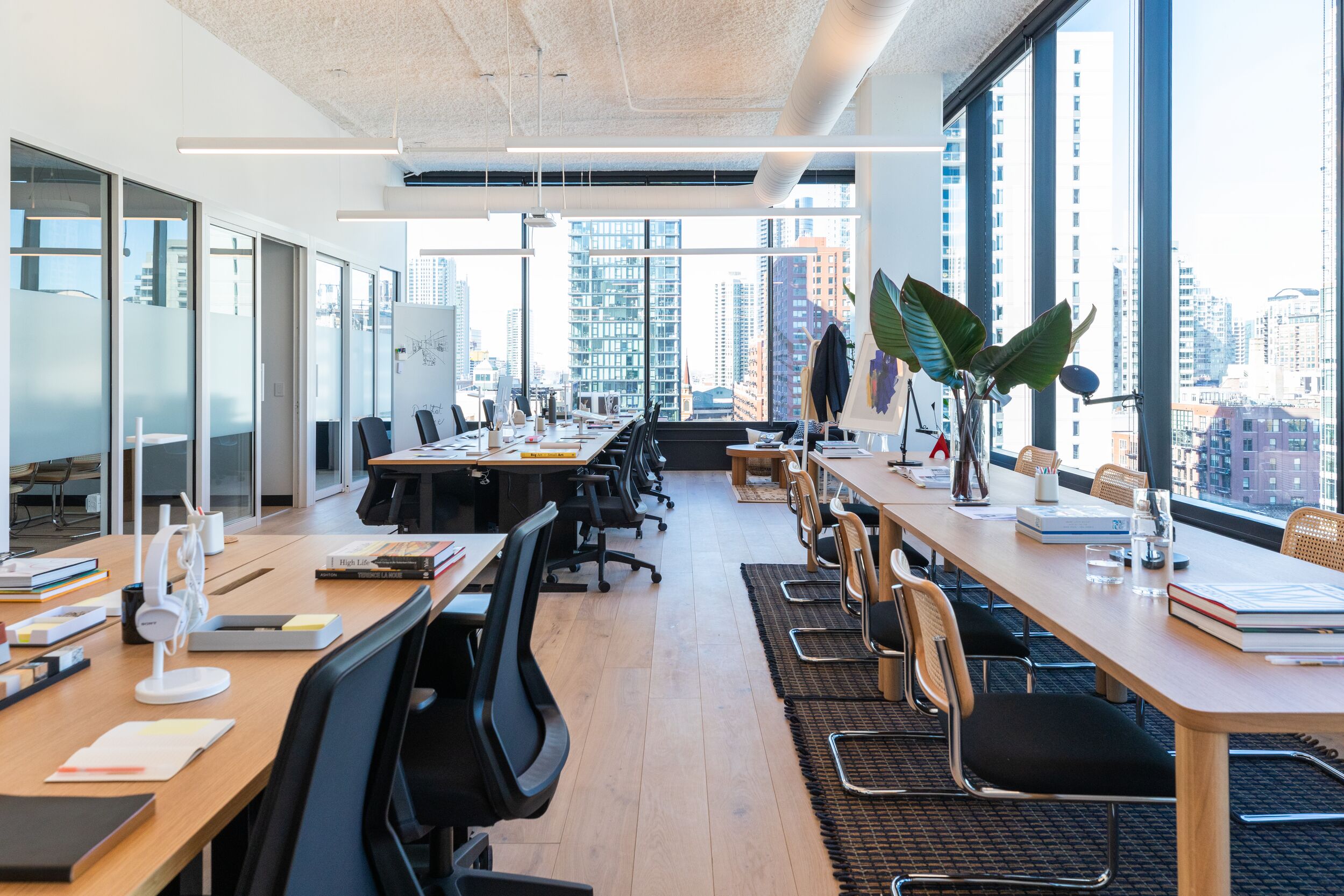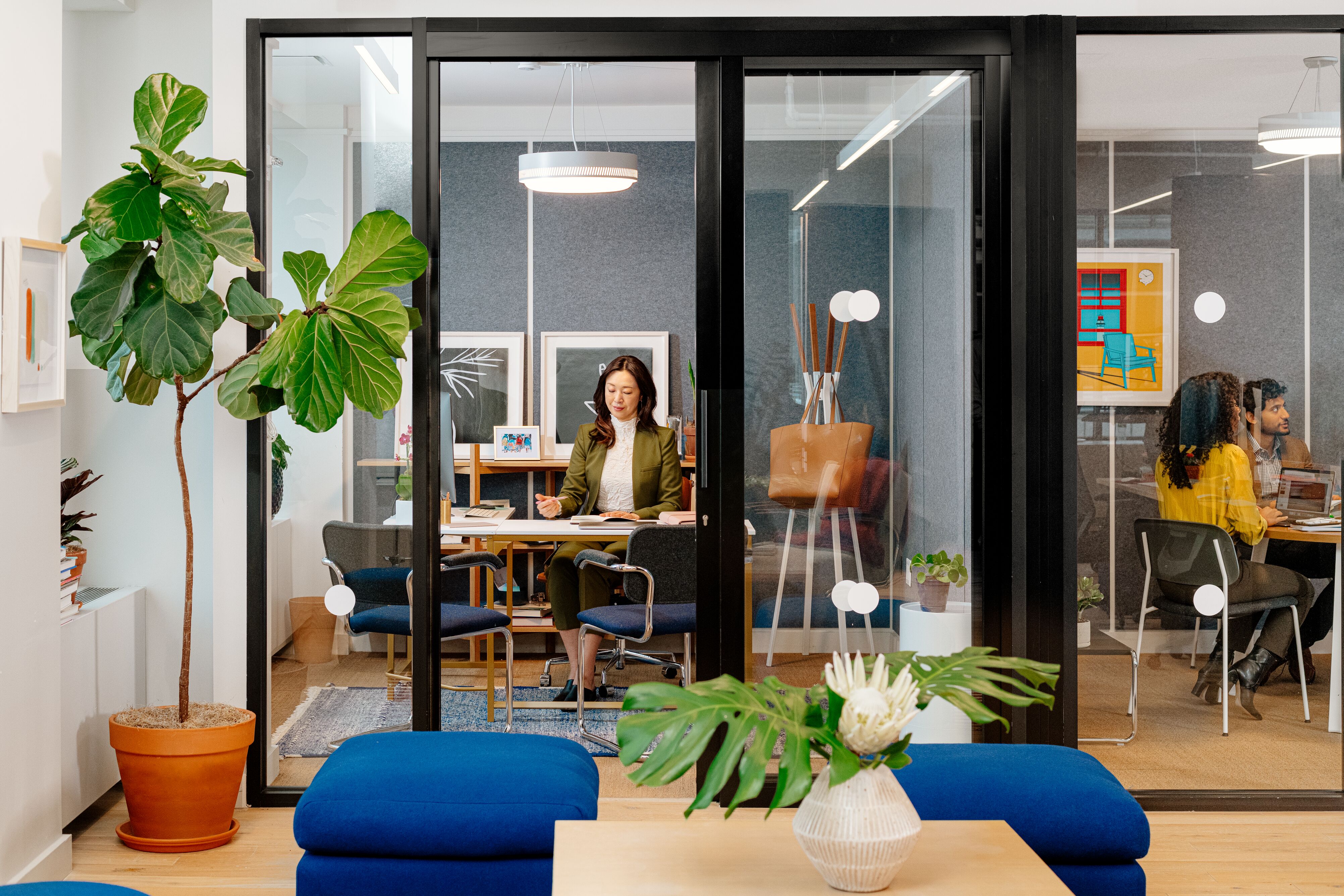The COVID-19 pandemic has permanently transformed how and where employees work. A recent survey by FlexJobs found that 65 percent of workers want to be full-time remote even as offices open back up, and an additional 31 percent want to have an approach that blends remote and in-office time. Attracting top-tier talent will require that employers create both flexible work schedules and flexible work spaces, a hybrid future that will spur companies to embrace new ways of thinking.
WeWork CEO Sandeep Mathrani recently sat down with The Economist’s Jan Piotrowski to discuss the future of flexible work and how companies like WeWork can play a vital role in ushering in the next era of work. Here are some key takeaways from the conversation.
Flexibility is key to both scale and happiness
As work from home quickly transformed from a covetable perk to a pandemic-driven global necessity, employees realized that reduced or nonexistent commutes and more time with their families were welcome side benefits. But WFH isn’t without its issues; childcare inequities, burnout, and increasingly blurred lines between work and leisure revealed that the ideal solution is actually something between the two poles.
“The word people use a lot right now is hybrid,” Mathrani told The Economist. “You work from home two or three days a week and [from] the office two or three days a week. Flexibility is a value proposition that has been accelerated dramatically.”
Flexibility is also how companies will scale in the future, Mathrani said. Office upsizing won’t be done in plateaued stages anymore, where you graduate from one tier of square footage to another while signing multiyear leases that you may outgrow before the term is up. Instead, employers will adopt a more dynamic office solution that can grow—and shrink—with their needs.
“WeWork’s core value proposition is flexibility,” Mathrani said. “We’re flexible in how much space you take. You have flexibility in the amount of time you take. And we’re flexible in portability of cost, which means if you’re with us in London and you need to move people to Manchester, you can do that without having to duplicate your cost.”
Hub-and-spoke is the new HQ
Even before the pandemic, marquee employers were beginning to downsize their mega offices in places like New York in favor of smaller locations distributed across different markets. Top-notch employees didn’t just want to live in major metropolitan areas anymore; they were choosing places like Austin, Denver, Charlotte, and Nashville. Hence, the hub-and-spoke model is fast becoming a global trend as teams are becoming more distributed and employees are making career decisions based on where they want to live instead of where the global headquarters is located.
Mathrani uses London as a prime example of how the office ecosystem is becoming more geographically spread out, and how WeWork provides a turnkey solution for companies looking to embrace the hub-and-spoke model. “You have a hub in central London and then have collaboration spokes in Waterloo and Paddington,” he said. “We see companies like ourselves that can serve these large enterprise clients in that model… And we effectively become those spokes within the city [for those clients].”
Offices are going on-demand
Office space has been a static asset for more than a century: You commute to the same space and sit at the same desk every day. But Mathrani believes tomorrow’s offices will be more dynamic and digital, opening the door to a more on-demand office for global workforces.

“COVID allowed us to digitize our real estate by creating an All Access card,” he said. “All Access gives a client access to hundreds of WeWork locations globally, and you can book on demand by the hour, day, week, or you can get a subscription model. We’ve started [to develop] the ability to completely change the way people think about coming back to work.”
Tomorrow’s flexible office, then, may become more responsive to the needs of individual companies and employers, and usher in a new type of working that leaves the fixed office ecosystem behind.
Collaboration thrives in person
Even for those who have fully embraced remote work, there’s a nagging feeling that something is missing when we’re not all in the same room together. The dearth of physical collaboration has seen innovation stumble. It’s no wonder: Those tiny, innovation-driving intellectual collisions that happen in office hallways and casual lunches are hard to replicate remotely.
“As the pandemic has endured longer, productivity has been hurt and innovation has also been hurt,” Mathrani said. “People want to come in [to the office] and collaborate and innovate. They’re eager to come in and do that.” According to a WeWork and brightspot strategy study on the impact of working from home on collaboration, 90 percent of people want to return to the office at least one day a week.
Mathrani also noted that WFH hasn’t been a universal boon to people’s mental health—employees are feeling the effects of burnout. Creating a physical boundary between work life and home life while still giving employees the flexibility they need could make for a more equitable future.
“People want to come back [into the office] because they need that break from their home. There are a lot of disturbances, there’s no separation, there are mental health issues,” he said. “They really need that quiet and peace to be able to be efficient at work. And that’s where that hybrid model comes in.”
The traditional lease model needs to evolve
The pandemic has deeply impacted the bottom line for commercial real estate landlords and is compelling many to reconsider the traditional lease model. “Landlords need to provide shorter terms, and I believe they’ll be creating their own flexible space because they need to keep their clients in place,” said Mathrani.
That transformation doesn’t need to put landlords and companies like WeWork at odds, though, said Mathrani. “We know how to design these spaces, we know how to build them, we know how to sell to smaller businesses, which isn’t what a lot of companies do,” he said. The symbiotic relationship between WeWork and landlords could bring a whole new wave of flexible spaces online in the coming years, accelerating a trend that’s already been put into motion by the pandemic.
T.M. Brown is a journalist, writer, and podcast host based in New York.
Rethinking your workspace?










